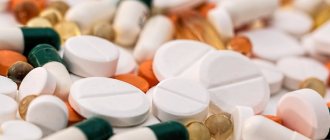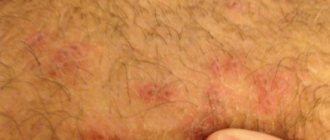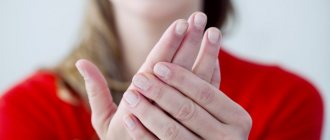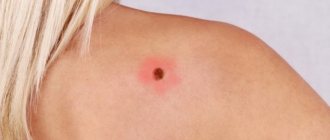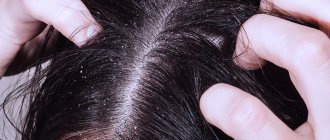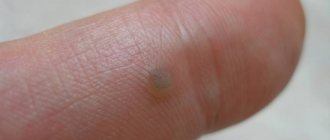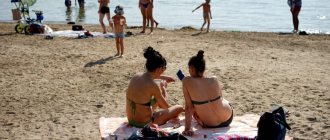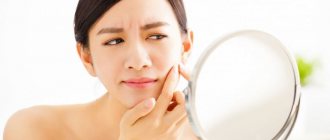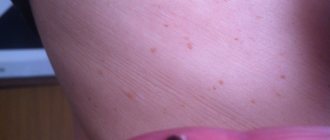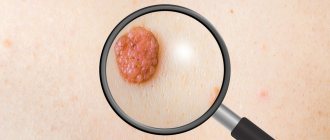What to do if a spot appears on the skin like a burn?
If any disease manifests itself, you should not wait for it to “go away on its own”, but go to see a doctor so that he can make a diagnosis and prescribe further therapy.
You should not prescribe treatment for yourself, because before taking medication, you should find out what disease it may be the source of. Perhaps this is not the influence of external factors, but the problem lies in the body itself.
The appearance of spots on the skin can be of different shades, shapes, sizes and types. The types are as follows:
- deep;
- superficial.
What to do if the spot itches?
If you experience itching on the affected area of the skin, the following types of disease may be a phenomenon of this process:
- lichen;
- neurodermatitis;
- eczema;
- psoriasis;
- other allergic reactions.
Let's celebrate! The area where the stains are located should not be scratched. In this case, there is a possibility of introducing various types of infection.
What does the stain look like - photo
Hemangioma
Sometimes a lump on your leg or a red spot on your arm that looks like a burn is benign.
Doctors call this pathology hemangioma (belongs to the Neurofibromatosis group of diseases, is inherited and causes the growth of fibrous tumors). Tumors of this type are brightly colored and have uneven contours. A tumor appears when blood vessels become intertwined. Hemangioma is very easy to confuse with a burn, since the spots do not cause discomfort, but itch (like burns during the healing period). To remove the tumor, you will have to contact a surgeon for a simple surgical procedure. Surgical removal of a hemangioma will allow you to forget about that annoying spot on your skin.
Video about red spots due to neurofibromatosis
Causes of spots on the skin
The appearance of spots can have various causes and this type of disease can be influenced by various factors, such as:
- poor nutrition;
- allergy;
- hormonal imbalances in the body;
- disease of internal organs;
- stress.
Also, depending on the location of the pigmentation, you can more accurately determine what type of disease it may relate to:
On the neck:
- Atopic dermatitis. Appears in the form of spots with a red tint. Discomfort and itching sensation. This type of pigment can be attributed to problems with the gastrointestinal tract. The treatment procedure will be a diet and complete exclusion of foods that contributed to the manifestation of this type of disease.
- Stress. This may be a manifestation of vegetative-vascular dystonia. The treatment will be soul acceptance and a series of exercises to achieve inner peace.
- Allergy. It can appear unexpectedly and at any time. This formation is a response of the body. This can be corrected by identifying the source of the allergy and taking anti-allergy medications.
On hands:
- Infectious diseases.
- Stress.
- Poor nutrition.
On the palms:
- Allergy.
- Scabies. It appears mainly at night. Transmitted by contact.
- Erythmia. In this case, small spots form between the fingers or on the wrist. They appear due to poor nutrition or long-term use of antibiotics.
On the chest:
- In case of disruption of internal organs.
- Hives. Formed due to unsuitable hygiene products (shower gel, soap).
- Hormonal disbalance. This type of disease can only be detected when visiting a doctor and after passing the necessary tests.
- Nutritional disorder. The food consumed does not contain adequate vitamins and minerals. With this disease, pigments can appear and disappear periodically.
- Stress. Symptoms will go away once morale has stabilized.
On the head:
Seborrheic dermatitis. Red spots and itching appear. In addition, yellow scales are formed. This is how the fungus multiplies. It can spread to the face, legs and even the groin area. This disease is dermatological, and accordingly a visit should be made to a dermatologist.
In the armpit area:
- Irritation. Occurs due to wearing tight clothing.
- Sweating. Red spots appear in case of intense sweating. In this case, you need to carefully observe hygiene.
Infectious diseases
Spots may appear after an infection occurs in the body. In this case, the first step is to limit the person’s contact with the source of the disease.
Infectious spots cause the following diseases:
- Measles. It is expressed in the form of red spots on the body, the temperature rises and a cough appears. The affected skin may peel.
- Rubella. With this disease, in addition to spots on the body, enlarged lymph nodes and an increase in temperature appear. The rash initially forms on the face, and then throughout the body. This disease may not appear immediately after infection, but over a period of time.
- Children's scarlet fever. The rash begins on the neck, and then moves to the chest and back, and then peeling of the wounds occurs. The causative agent of this disease is streptococcus.
- Chicken pox. It can be classified as a type of herpes. Treatment takes about ten days. The usual cure for this disease is brilliant green.
Dermatological diseases
Skin problems - this is how diseases can be characterized in the form of red spots on the body.
There are the following types:
- Psoriasis. The appearance of red pigments that become crusty. In this case, severe itching is experienced.
- Eczema . A red spot with itching and possible discomfort in the area. The sources of the disease may be problems with internal organs, stress, allergic reactions or pregnancy.
- Hemangioma. A mole that subsequently grows to a fairly large size.
- Pigmentation. Occurs due to hormonal dysfunctions in the body.
Allergy
Allergies occur under a variety of circumstances. In most cases, this happens when the same irritant affects the internal organs of a person for a long time. In this case, pigments may appear, which subsequently begin to itch.
An allergy can begin in the following cases:
- for medicines;
- to introduce a new type of food into the diet;
- dust;
- pollen from plants;
- arthropod bites;
- fungal spores;
- animal hair;
- chemicals, cleaning and cosmetic products.
Autonomic dysfunction
Occurs due to stress in places where vascular capillary tone is impaired.
Treatment will be:
- cold and hot shower;
- depressant;
- dream;
- rest;
- physical exercise.
The causes of this type of disease are:
- problems with the nervous system;
- disruption of internal organs;
- incorrect diet;
- The body's cardiac system is damaged.
Folk recipes
You can try to remove a red spot on a leg, arm, torso or face that looks like a burn using folk remedies. They are effective even against lichen and fungus, but only as an auxiliary therapy. The following recipes have worked well.
to the table of contents?
Applications with propolis tincture
For the treatment procedure, you need to take 10 ml of propolis alcohol tincture and mix it with water (100 ml). Moisten a sterile bandage or gauze in the resulting solution, apply a compress to the stain, and apply a tight bandage on top. Leave for 10 minutes, then remove the application. Perform the procedure 2 – 3 times a day.
Note. Before repeated manipulation, the problem area should be carefully washed with warm water and wiped dry.
If the spots are localized on the face, then there is no need to fix the compress.
to the table of contents?
Healing ointment
Red spots on the body can be lubricated with homemade ointment. To do this, you need to pour 5 ml of decoction of calendula flowers into 40 ml of castor oil. The ingredients must be mixed well and then applied to problem areas. Wash off any remaining ointment after 20 minutes with warm, clean water. Repeat the procedure 3-4 times a day until complete healing.
to the table of contents?
Compresses based on herbal infusions
If the spots appear due to stress, then you can reduce them or make them less bright with the help of decoctions of soothing and anti-inflammatory herbs:
- chamomile;
- peppermint;
- calendula;
- St. John's wort;
- yarrow;
- sage
For red spots of allergic etiology, a decoction or infusion of the roots of the tripartite series helps well. In the finished medicine, you need to moisten a piece of clean cloth and apply it to the affected areas. After 10 minutes, remove the application, but the treatment area does not need to be moistened with water.
Red spots cannot be ignored. You should also not hope that they will go away on their own, especially if there are other unpleasant symptoms.
The choice of treatment method depends on the cause of the patchy skin rash. And diagnostics and development of a treatment regimen should be carried out by a competent specialist!
Diagnostic methods
You should consult a doctor for diagnosis. To begin with, the doctor conducts a visual examination, after which they take scrapings from the affected area of the skin and examine the resulting material.
To avoid such skin problems, several factors should be followed:
- apply cream to the skin before exposure to the sun to protect against ultraviolet radiation;
- using high-quality hygiene products;
- proper nutrition.
Which doctor should I contact?
The first doctor you need to visit is a dermatologist. After identifying the source of the disease, doctors such as:
- venereologist;
- gastroenterologist;
- endocrinologist;
- oncologist.
Let's celebrate! The doctor examines the type and size of the spot, as well as the presence of diseases of this kind in the patient’s relatives.
Risk factors
Pregnant women and babies need to spend less time in the open sun. Which people get acne on their shoulders, face and other parts of the body more often? This category includes:
- People with fair hair or light skin tones.
- Pregnant women.
- People who frequently visit the solarium.
- Girls who have done chemical peeling or permanent makeup.
- Infants and infants.
- Women and men with problems with the gastrointestinal tract and liver, as well as with weakened immunity. Also, the cause of acne may be vitamin deficiency or metabolism.
- Aged people.
Treatment of a spot on the skin in the form of a burn
Treatment should be prescribed by a doctor, but if the causes of the disease are known, you can effectively promote a speedy recovery, or this is a mild case that you can try to remove with folk remedies.
Calamine lotion relieves itching well. If there is no change within a few days, you can try using antihistamines or anti-inflammatory drugs. Accordingly, if you are treating a fungus, then it will be antifungal and antibacterial medications.
If this is caused by stress, one should achieve internal balance through yoga or other physical exercises. If the source is a cosmetic product, you simply need to exclude it from use.
Also, you should consult a doctor in cases of exacerbation or if the wound remains unchanged within two days.
Of course, it is difficult to predict diseases of this type, but the main thing to remember is: in order to avoid more serious diseases, it is better to immediately consult a doctor who can identify the cause of the disease and prescribe the necessary medications for treatment.
Let's celebrate! No one is immune from the manifestation of this type of disease, but timely diagnosis will help avoid many problems with such diseases.
Possible complications
Normally, the physiological healing process goes through three phases and is a chain of biological reactions.
There is an inflammatory process in progress
This is the first stage of healing. Inflammation begins immediately after the burn and, if there are no complications, lasts up to 5 days. A typical reaction occurs - narrowing and subsequent dilatation of blood vessels, exudation and infiltration.
For local treatment in this phase of inflammation, drugs with antiseptics, enzymes and osmotically active substances are used.
They must solve 3 problems:
- Cleanse damaged skin of dead cells. Open the infected blister.
- Prevent suppuration.
- Create conditions for the formation of a new epidermis.
To ensure that the inflammatory process occurs physiologically and without complications, hydrophilic (polyethylene glycol) or emulsion-based products are applied to the affected areas. They adsorb toxins, do not dry out the wound and do not allow the dressing to dry out. At the first stage, it is important to ensure access of oxygen to the burn site, and products that form a greasy film prevent this.
The wound is festering
Primary bacterial infection most often occurs on the 3rd day after the burn. A huge number of leukocytes and lymphocytes accumulate in the wound. The surface of the burn becomes covered with pus - a natural reaction of the immune system to fight pyogenic microbes. At a later date, with improper treatment or insufficient care, a new focus of necrosis (secondary infection) may form. Suppuration is always accompanied by general intoxication, pain, and fever.
Covered with a thick crust
For uninfected 2nd degree burns, a crust (eschar) forms on days 3–7, under which active healing and the formation of new, healthy skin take place. This type of healing does not occur under gauze bandages; a crust forms only when air is exposed. A scab is a natural, natural “bandage” that protects the wound from bacteria, dirt and injury. It stays on the wound until healing occurs. After young epidermis appears at the burn site, the scab gradually peels off and comes off on its own.
First aid
With blisters, emergency help is usually not required, but if itching or pain overcomes, you can take a set of simple measures to eliminate these symptoms:
- The blister itself and the skin around it must be thoroughly washed with soap;
- Wipe the blister with iodine or alcohol without damaging the skin;
- Use a sterilized needle to open the blister;
- Carefully drain the liquid;
- Apply an antibacterial agent (for example Levomekol);
- Bandage or seal with adhesive tape, laying a layer of fabric;
- After a few days, remove the bandage, sterilize again with alcohol and remove excess skin.
source
Skin care rules
To prevent a rash from appearing on your body after sun exposure, you must follow these rules:
- Don't touch your face. When we are outside, various bacteria almost immediately settle on our hands, and in the summer - dust and dirt. If you want to wipe your face, it is better to use wet wipes.
- It is imperative to wash your face in the morning and evening so that no residual dust or sweat remains on your face. Tar soap, which has a bactericidal effect, is good for getting rid of acne. It can also be replaced with a chatterbox.
- Clean your skin as often as possible, at least with wet wipes.
- It is strictly contraindicated to squeeze, open or puncture pimples. They need to be removed only with the help of special means prescribed by the doctor.
- If a person has photodermatitis, exposure to the sun should be limited. It is advisable to wear a wide-brimmed hat and sunglasses.
- It is not recommended to use any cosmetics before leaving home. The exception is a good quality photoprotective product, which must be applied 20 minutes before going outside.
Sun protective cream should be applied before leaving the house, and also while sunbathing on the beach.
How to treat acne?
Use of pharmaceuticals
All medications must be taken as prescribed by a doctor; self-medication is unsafe. The medications shown in the table will help get rid of watery formations and rashes:
| Medication group | Name |
| Corticosteroids | "Prednisolone" |
| "Betamethasone" | |
| "Hydrocortisone" | |
| "Dexamethasone" | |
| Antihistamines | Zinc ointment |
| "Levomekol" | |
| "Fenistil" | |
| "Sinaflan" | |
| Antiherpes | Oxolinic ointment |
| "Acyclovir" | |
| "Zovirax" | |
| "Neovir" | |
| "Valacyclovir" | |
| For burns | "Panthenol", "Bepanten" |
| "Furacilin ointment" | |
| Balm “Rescuer” | |
| "Sintomycin" | |
| Vishnevsky ointment |
